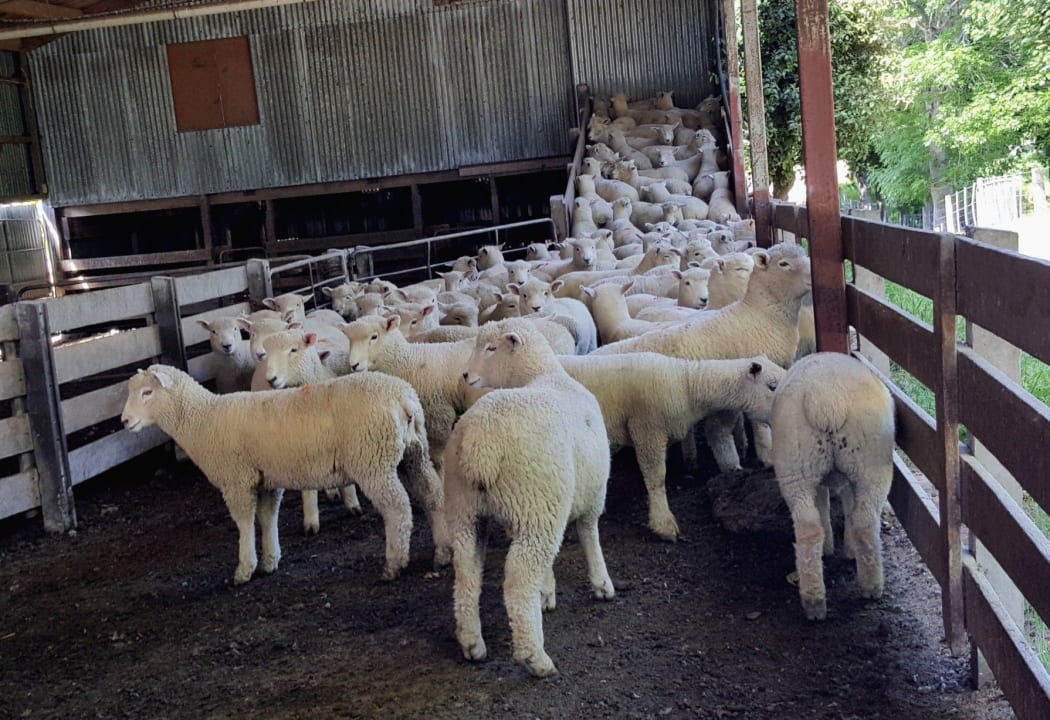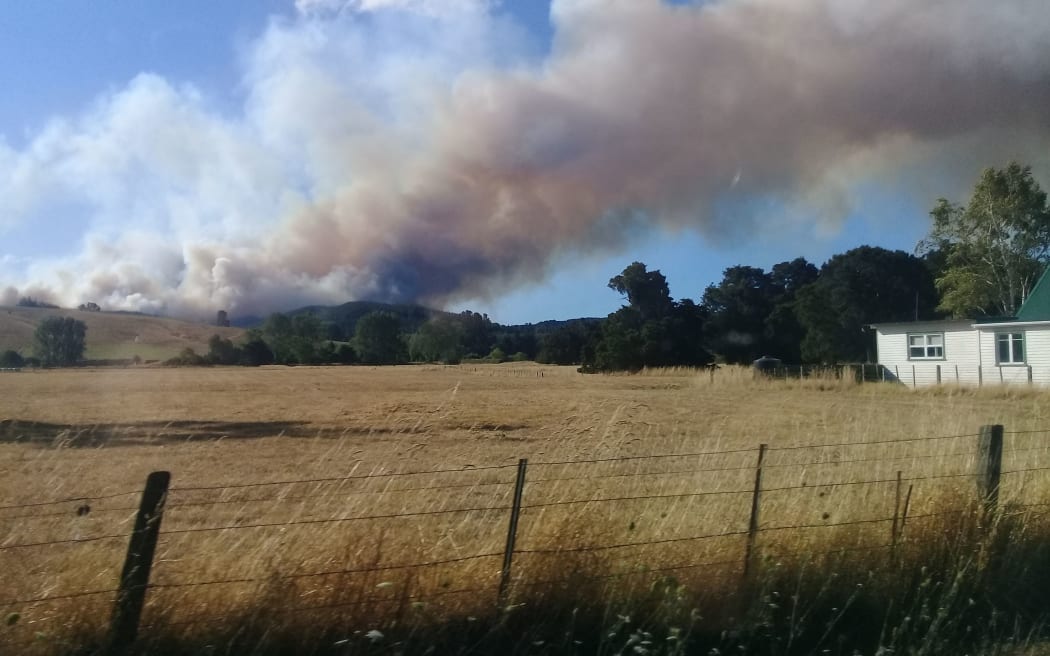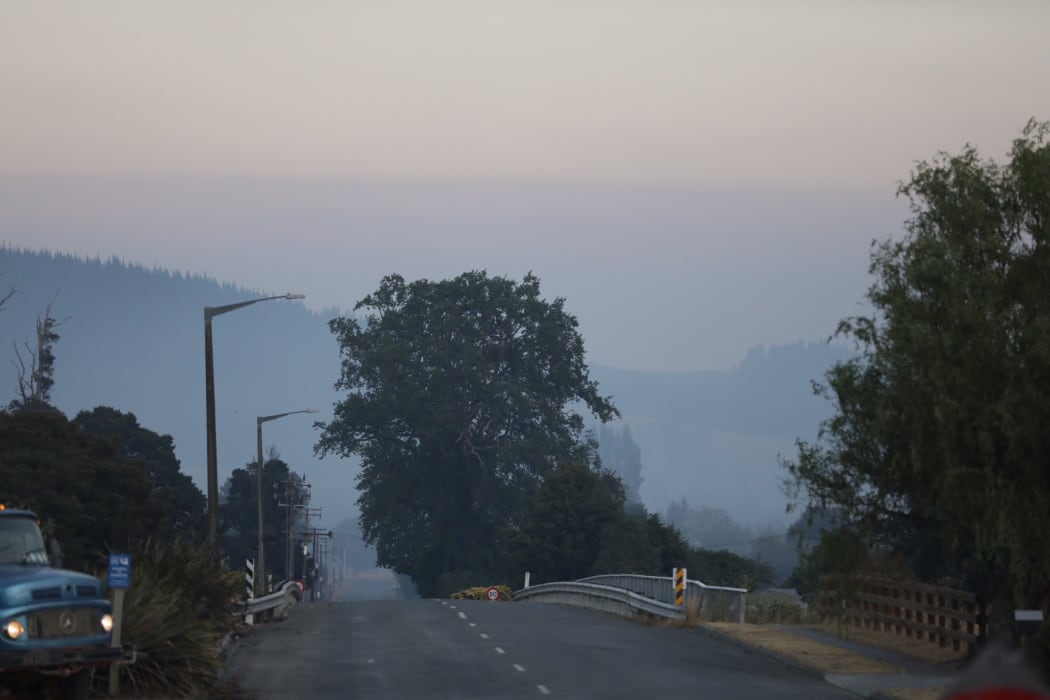Each week our Country Life reporters wrap up what's happening on farms and orchards around New Zealand. Everyone's thinking of those caught up in the raging fires in the Tasman district, but here are the regional on-farm conditions..
The very eastern side of Northland, from Bay of Islands north, received reasonable rain a week ago so hopefully pastures will turn green but the rest of the region missed out. Daily milk production is down compared with last year but no-one's panicking yet .
Around Pukekohe for the first half of the week growers continued mechanically harvesting the main onion crop in hot dusty conditions. Wednesday and Thursday a weak front brought easterly winds, overcast skies and cooler temperatures along with useless light rain. All it did was stop onion harvesting. There's been no good fall of rain for 3 weeks.

Photo: RNZ/Cosmo Kentish-Barnes
Waikato also wants a really good dump of rain; a few skiffs this week haven't done much. Facial eczema spore counts are going up and fly strike is still a challenge.
Parts of King Country received around 10 millimetres of rain on Wednesday evening, but others missed out so farms are starting to look quite brown, although most have okay covers with rank feed. The store market for lambs has dropped back. Finding buyers is now more difficult and those that are buying, only want cheaper light lambs.
It is very very dry in Bay of Plenty. Kiwifruit vines that were stressed with wet feet in winter are now struggling and fruit is going soft well before it is due to be harvested. That aside, for most orchards, crop loads and size are good. Some orchardists are getting anxious about finding enough labour for the upcoming harvest.

Jerusalem artichoke plants in North Canterbury Photo: RNZ/Cosmo Kentish-Barnes
Taranaki had a cooler week as a south-easterly paid a visit. It brought a tiny volume of rain that settled the dust but that's all. Patches in the north and on the coast are starting to dry out but farms are generally in a sound position for feed. One farmer said it's a proper old fashioned summer when the sea's warm to swim in.
There was a little bit of rain up the coast from Gisborne during the week, but farms are certainly drier than they were a week, although they're still green.The pressure is coming on stock water supplies with flows in streams slowing down.
Apple and Peaches
Hawkes Bay welcomed the cooler weather this week; it helps to colour apples up. Some extremely nice looking royal gala are appearing in local shops - the prices at home are good enough for growers to not be pushing for exports just yet.There are still a few plums being picked and the last of the Golden Queen peaches. Fruit trees are coping without rain because there is good moisture lower in the soil profile. The main concern is another looming shortage of labour for picking here too.

Photo: RNZ/Cosmo Kentish-Barnes
Wairarapa is fairly dry. One farmer said she hadn't realised just how dry until she heard that their fire crews aren't being sent to Nelson in case they're needed at home. However lambs are thriving in the hot dry weather and cattle are killing out at good weights
Crispy dry
Manawatu is looking a bit crispy dry. Dairy cows are being fed plenty of supplements. The store market for lambs has dropped here too. There's suddenly not so much tucker on the finishing farms so people have stopped buying.
A strawberry grower in Horowhenua says they're trucking along well and the fruit has wonderful intense flavour at this end of the season, quite a lot better than the rain affected outdoor fruit at Christmas time. Rain this week didn't amount to much.
South Island
All farmers' thoughts are with their Tasman counterparts and other residents near Nelson who are living under clouds of smoke and are worrying about their stock, farms, homes and neighbours. Because it's tinder dry all farms, market gardens and orchards are feeling the pinch as ground water levels continue to decline. Only about 9 millimetres was in the rain gauge in January, compared to the average of 90. The amount of water that's allowed to be taken from catchments on the plains has been cut from 35 to 50 per cent of a permitted allocation. Like everyone else, apple growers are using as little water as possible and in some orchards fruit wasn't growing as fast as it normally would, but work continues with the last of the tree thinning and preparations for harvesting are getting underway.

The fire burning at Wakefield. Photo: Jaanvi Harrison
Eastern Marlborough's getting very dry. A farmer at Seddon says he has had no rain since Christmas but because of the warm and moist early summer there's still plenty of tucker around for cattle and sheep. The fire risk is high on farms with plenty of dry long standing grass. If there's no rain soon in the headwaters of the Awatere River irrigation restrictions are expected to be put in place. Grapes are going well in the province and enjoying the heat but some vines are starting to look stressed due to a lack of moisture.

Wakefield was covered in a thick haze this morning. Photo: RNZ / Rebekah Parsons-King
On the West Coast it is dry up the Grey Valley and there's been some heavy rain in South Westland. In between - around Hokitika - one farmer says he's been getting 30 to 40 millimetres of the wet stuff a week recently and his winter crops are looking better than they have for years. Everyone's flat out topping grass to keep quality up and making silage. Technicians are out an about doing pregnancy testing and the farmer we talked to says he's still milking peak numbers.
Mid-Canterbury's been a bit cooler this week so harvesting has been a bit stop-start. Grass growth has slowed with the combination of dry and heat. Dryland crops are starting to look stressed. Irrigation now being very important.
Grass growth has slowed a bit in South Otago and farmers could do with a shower or too. No-one's complaining though as 90 millimetres came down in January. People are doing their second cut of silage and it's never been better quality. Milk production on our contact's farm near Balclutha is a tad down on last year - he puts it down to feed quality issues. Pregnancy testing is due start next week on his cows.
Western Southland's starting to green up. On dairy farms, milk production has picked up a fraction after a challenging early season. Initial results from dairy heifer scanning are looking positive. Lambs are being drafted for the works. One farm we speak to at Blackmont says weights are 41 to 45 kilos for the healthy 5-month old sheep. The buoyant lamb schedule is in stark contrast to wool prices. The same farmer's just shorn 1000 sheep but he's only getting $2.35 a kilo clean for the 39 micron wool. This won't even cover the cost of shearing.

